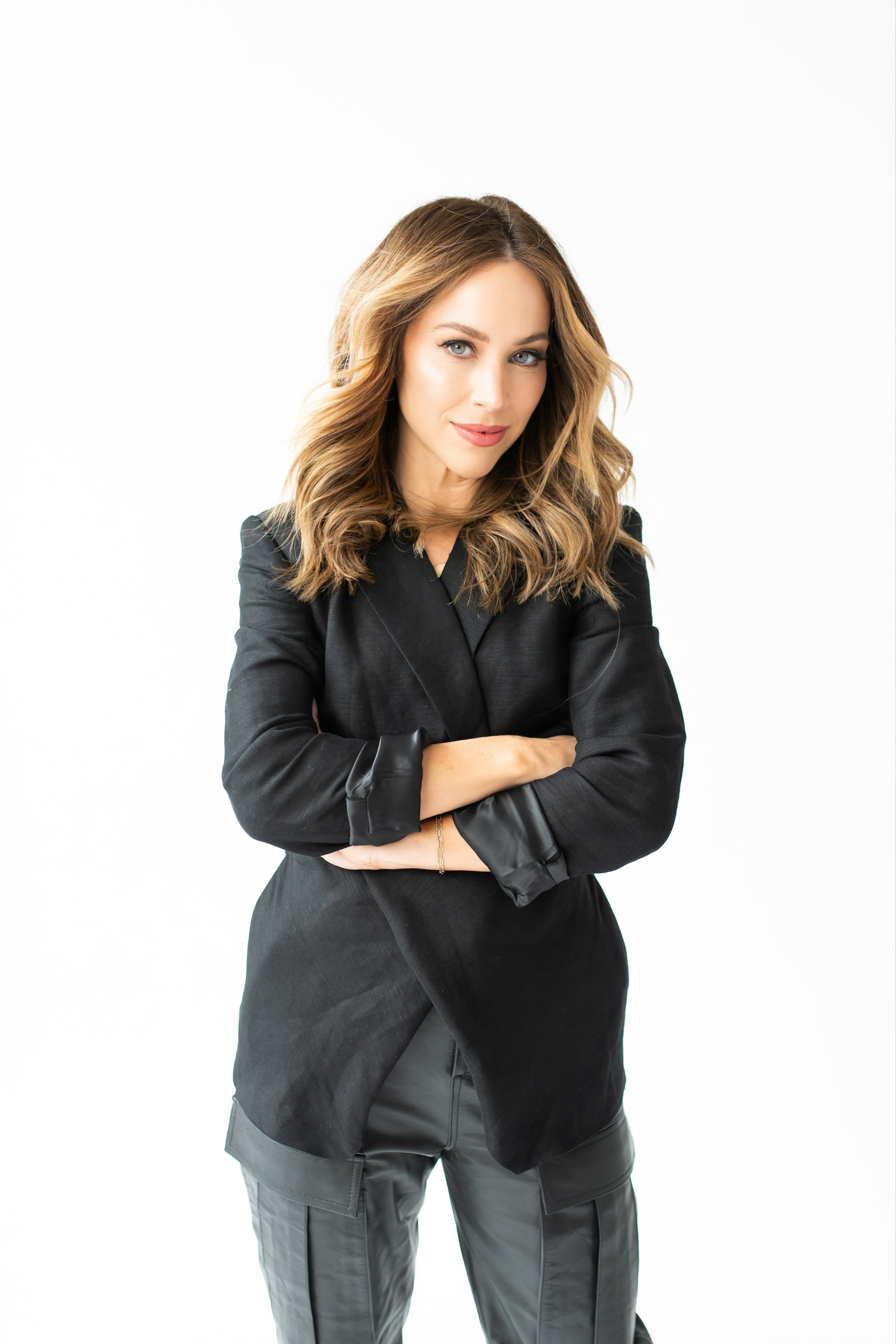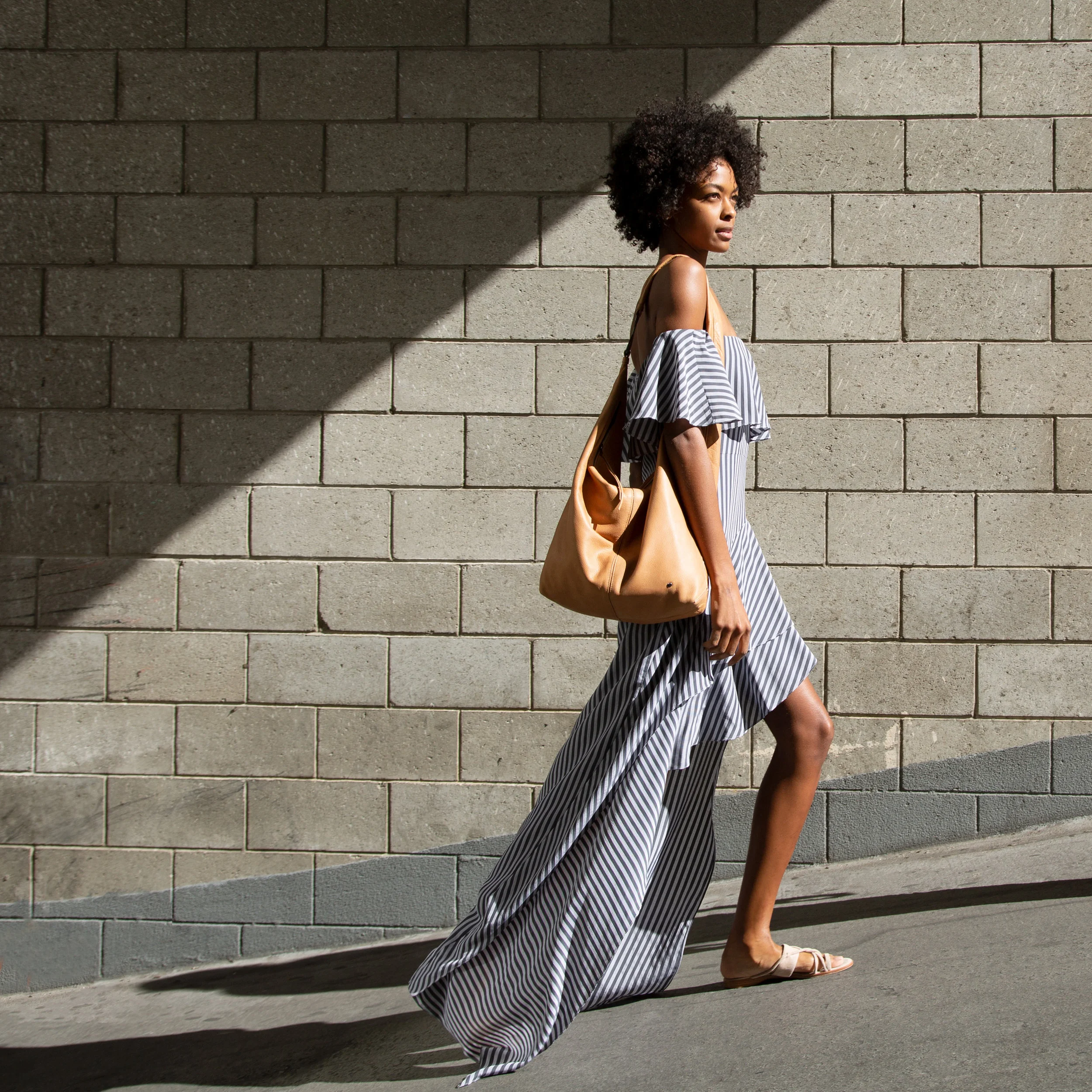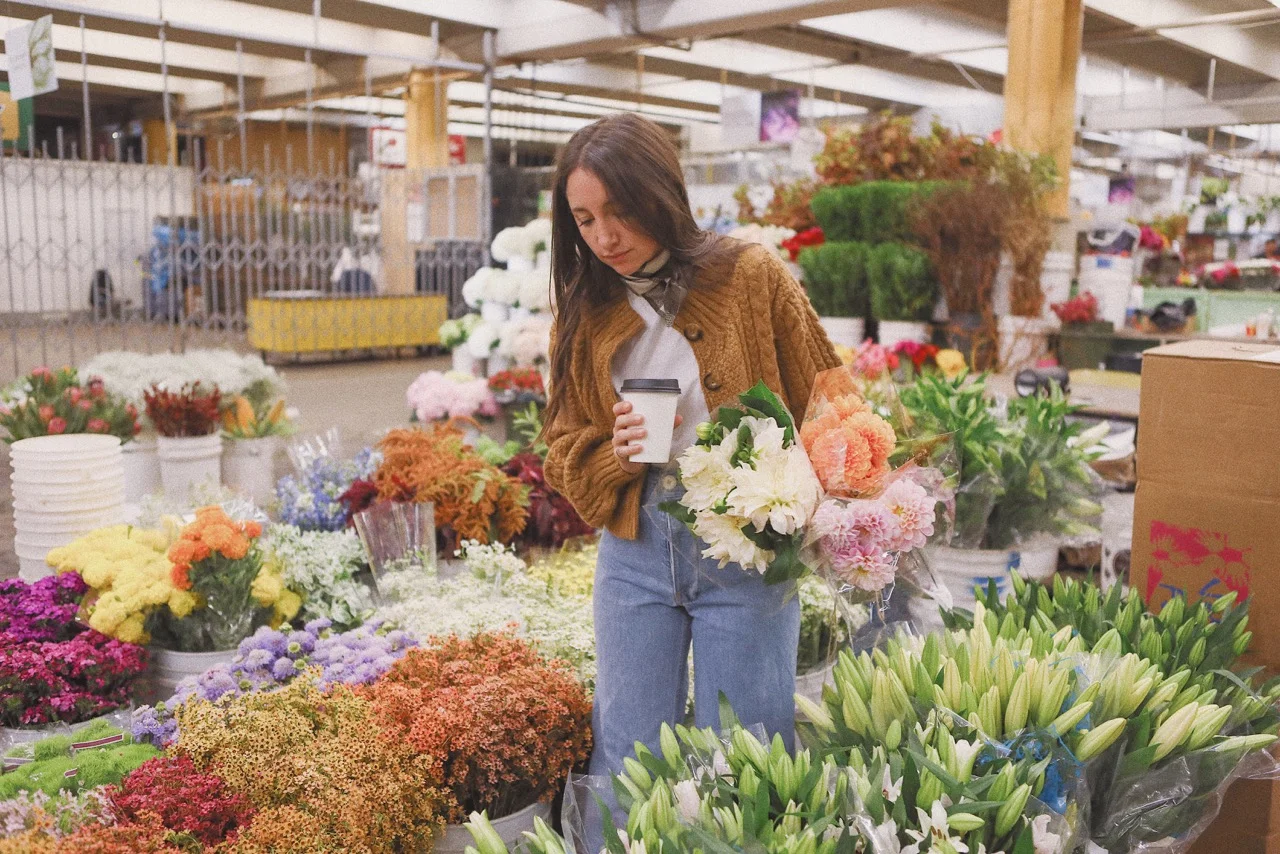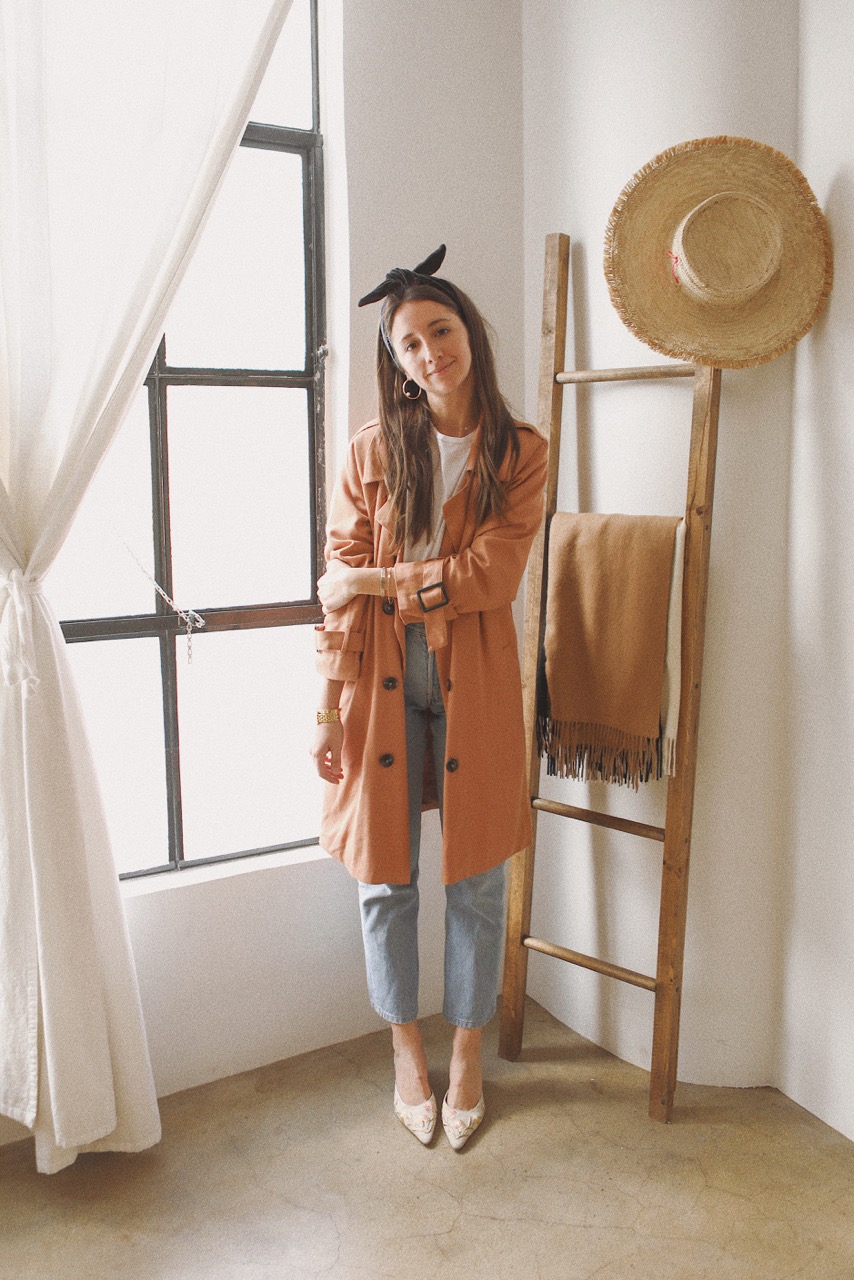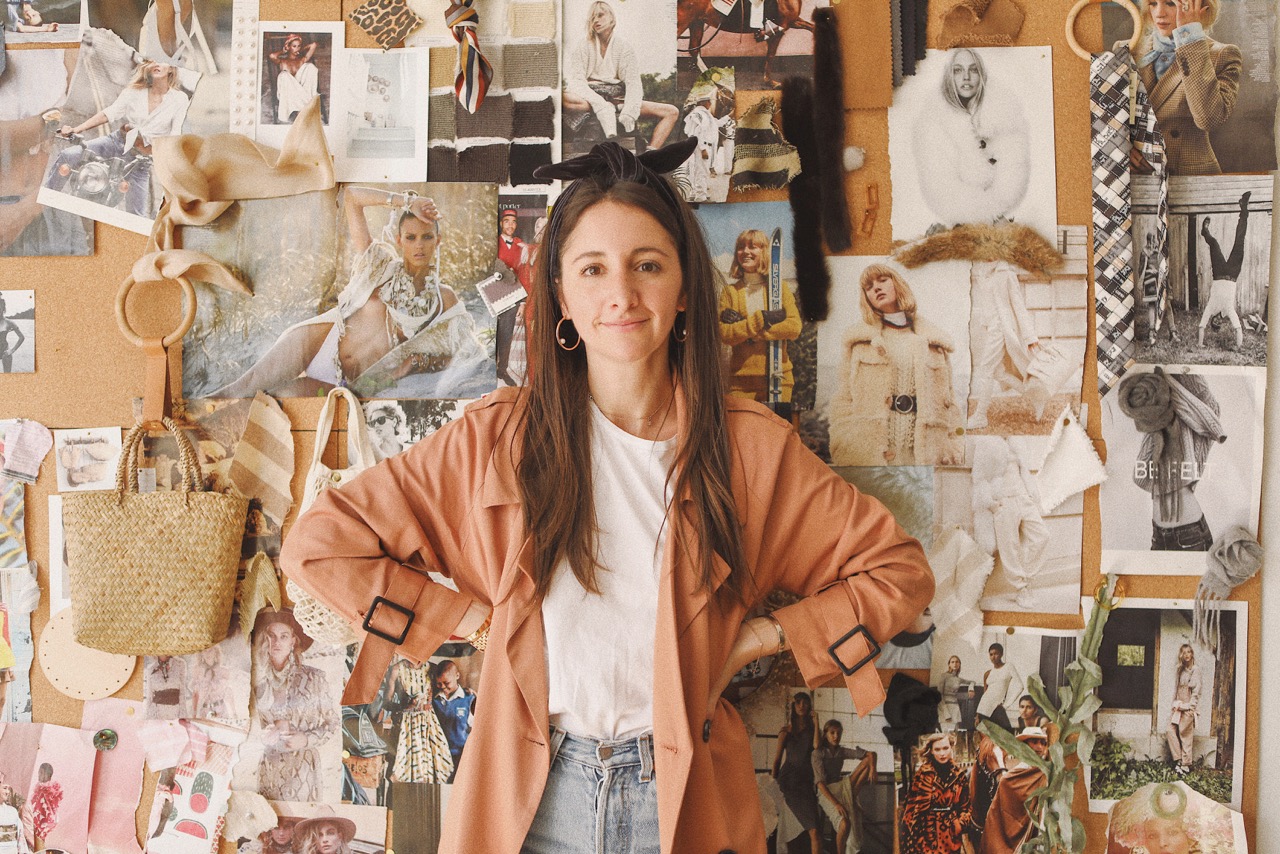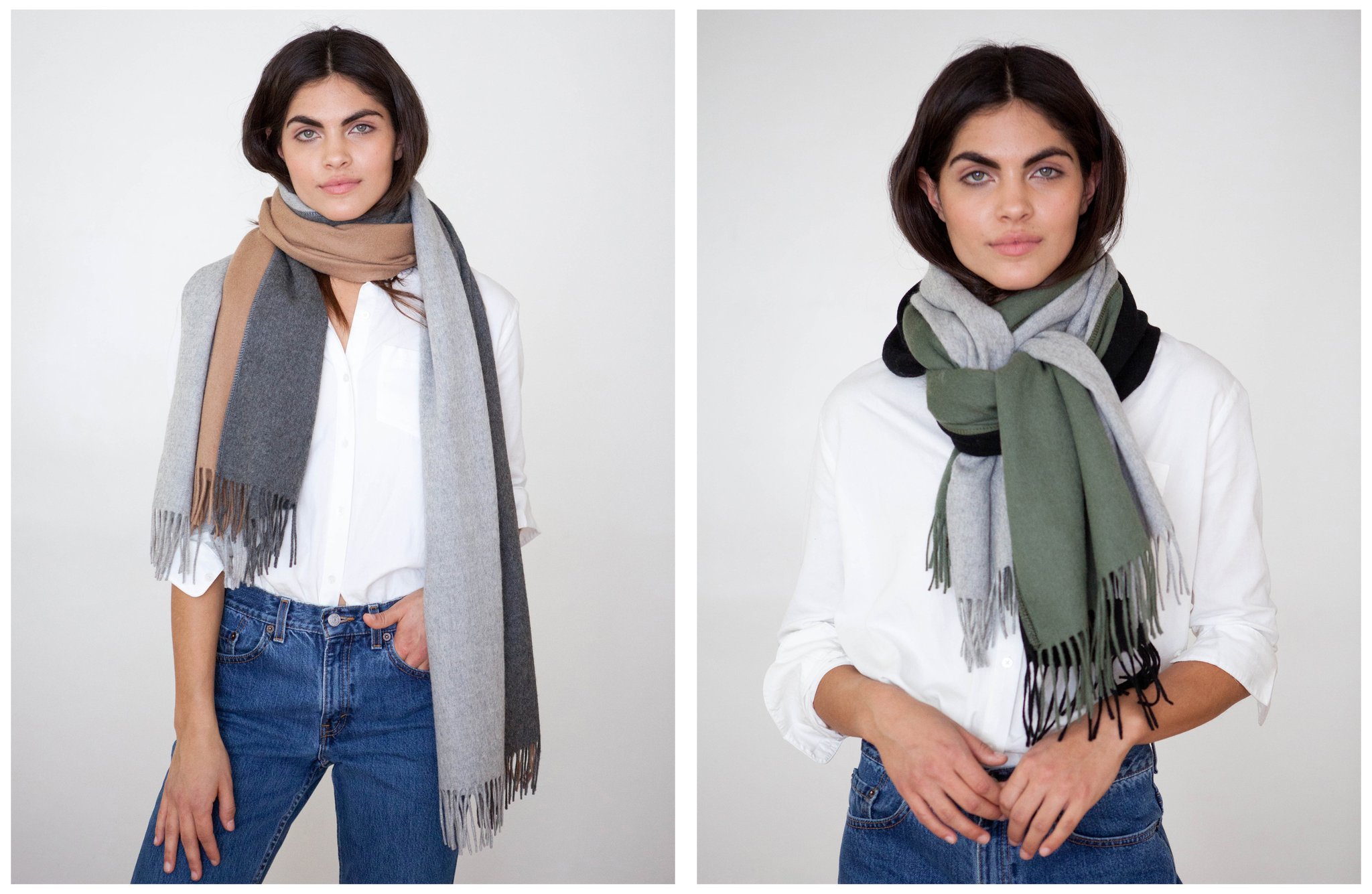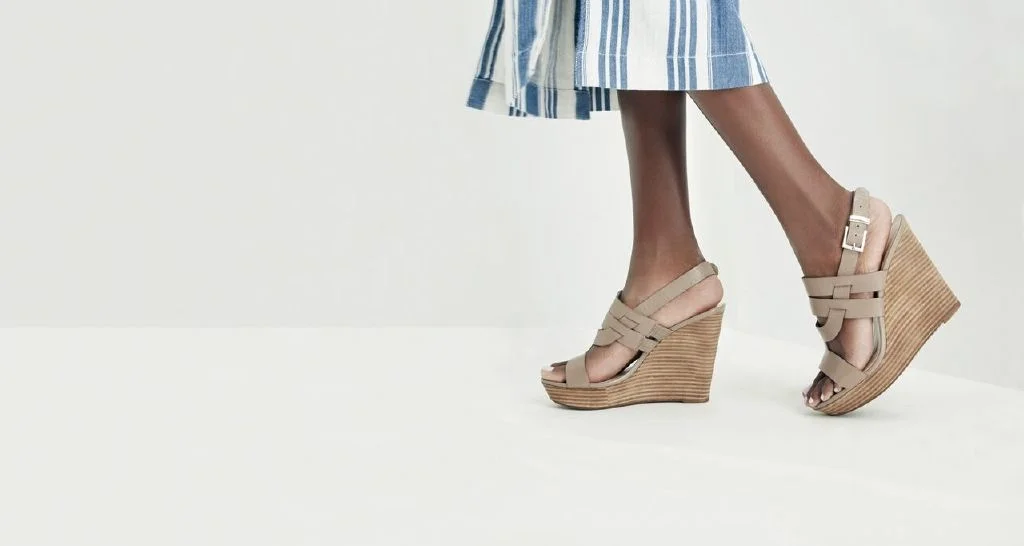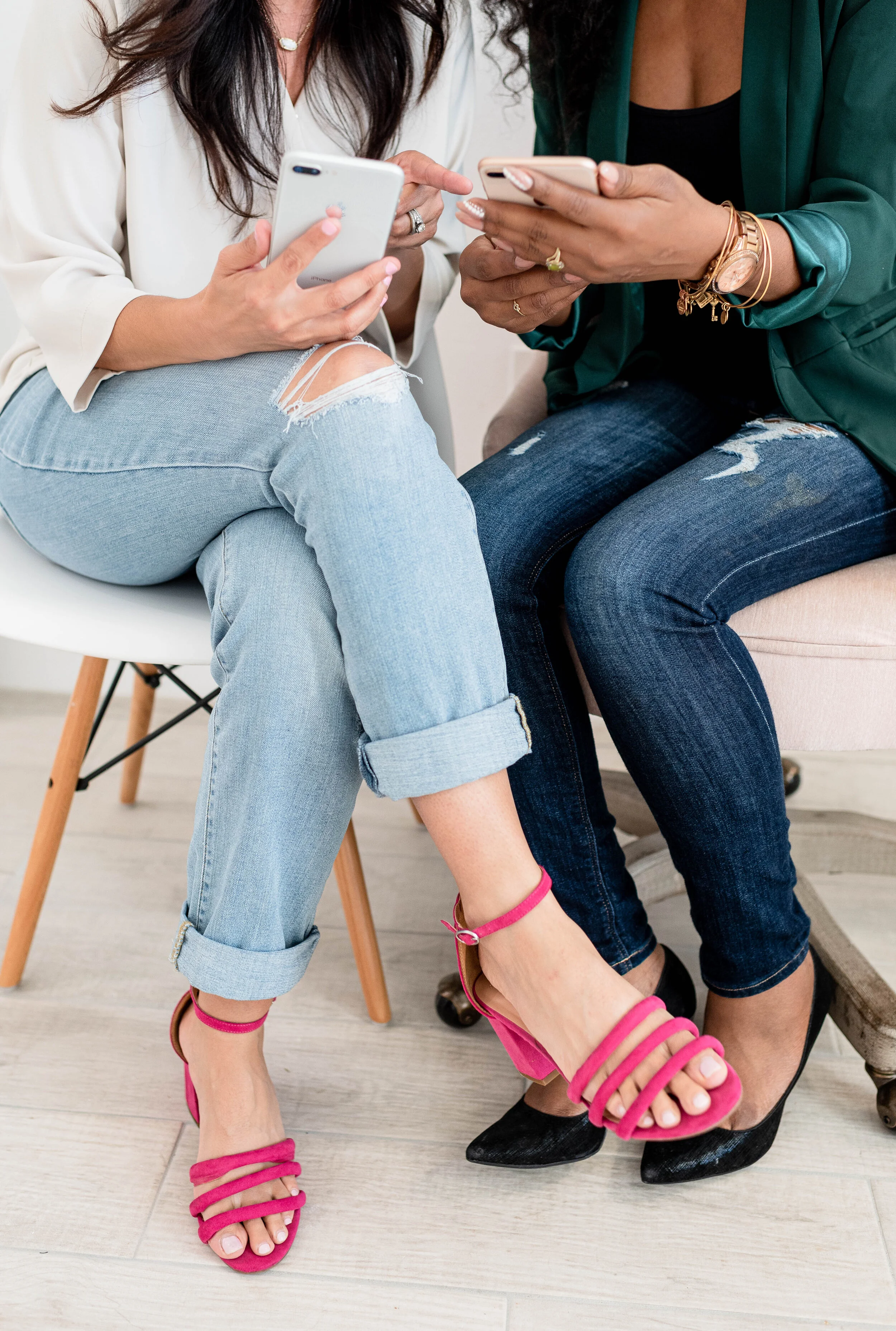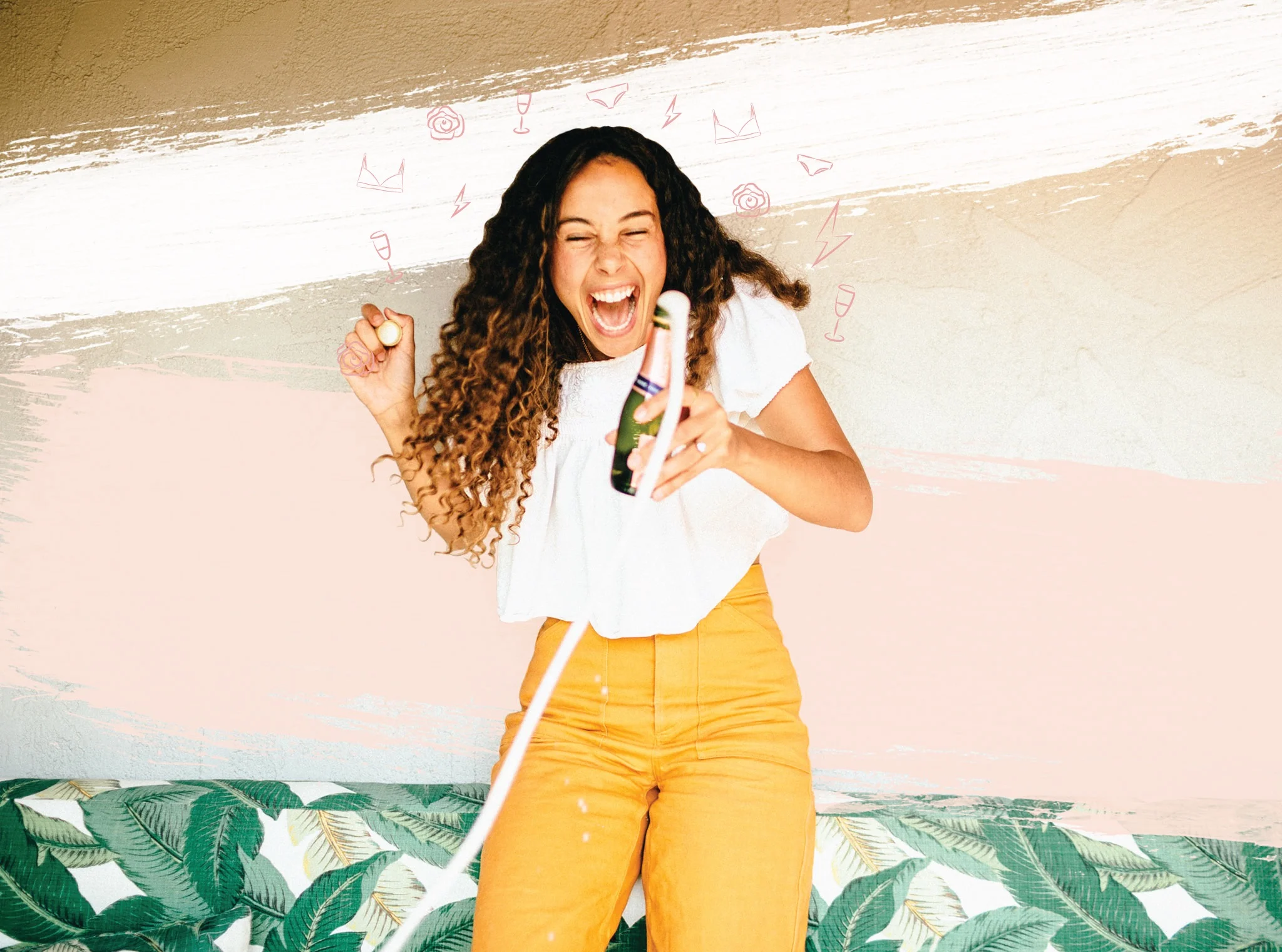The Fashion Industry Accounts for 4% of the Globe’s Greenhouse Gas Emissions—So These Founders Are Doing Things Differently
Proving sustainable fashion can be profitable.
You asked for more content around business finances, so we’re delivering. Welcome to Money Matters where we give you an inside look at the pocketbooks of CEOs and entrepreneurs. In this series, you’ll learn what successful women in business spend on office spaces and employee salaries, how they knew it was time to hire someone to manage their finances, and their best advice for talking about money.
Photo: Courtesy of Londre Bodywear
It’s no secret that fashion has a sustainability problem. But while the industry currently accounts for 4% of all global greenhouse gas emissions, consumers are advocating for change and spending their dollars accordingly, investing in brands that are committed to reducing their impact on the environment. Londre is the latest sustainable fashion brand to catch our attention at Create & Cultivate, and we’re not the only ones. The Canadian fashion brand recently received a $208K investment on “Dragons’ Den” (a.k.a the “Shark Tank” of Canada) and we’re eager to share the story behind the brand before you see it all over your Instagram feed (because trust us, you will).
Based in Vancouver, Ainsley Rose and Hannah Todd launched Londre in reaction to the startling amount of plastic pollution in the world's oceans. To date, the brand has recycled 100,000 plastic bottles off of the streets and beaches of Taiwan into their sustainable swimwear offering. But sustainability isn’t just about the planet for Rose and Todd, it’s also about the people. “Our products represent 360-degree sustainability, and this is something we heavily invest in,” Rose tells Create & Cultivate. “We believe that you can’t take care of the planet without taking care of its people, so ensuring our internal and external teams are treated fairly is critical,” Todd adds.
Here, the co-founders share how they bootstrapped the brand with an initial investment of just $15,000 and turned it into a business that generates seven-figure revenue.
Talk us through your bootstrapping process. How did you self-fund Londre, and would you recommend that route to other entrepreneurs today?
AINSLEY ROSE: We took an initial $15,000 CAD investment from a close friend to help with our first round of samples. Since then, we’ve completely bootstrapped our business and have been self-sustaining. As a sustainable mission-driven brand our finances have to be looked at strategically to ensure that we can make choices that enact positive change and benefit both the planet and our business.
HANNAH TODD: Since inception, Londre has seen a 300% year-over-year growth, and a big reason why is that we’ve been scrappy. This has helped us develop clarity in our business because sometimes having too much cash allows you to put a bandaid on a problem instead of fixing the issue from the start. This has also allowed us to grow organically, putting community first and ensuring market need. Not being beholden to a VC or large stake investor also has allowed us to work without an additional layer of pressure, and better tune into our intuition about what is best for our business.
Can you share three crucial elements everyone should include in a pitch deck when raising money?
HT: Because we were pitching to someone we have a strong personal relationship with, our pitch was super simple. We didn’t even have a sample made yet. Ultimately, they chose to invest in us because they had faith in the values and ethics we hold as people, and less so in the product offering itself. Being empathetic, speaking from the heart, and having a good understanding of market trends helped us in our pitch.
AR: The person who invested in us originally is still a trusted advisor and has been able to provide incredibly helpful insights over the years.
What are some of the most common mistakes people make when raising money?
AR: I think the most common thing we see is valuing skills over the relationship. In choosing an investor, or business partner for that matter, ensuring that you feel comfortable communicating honestly and have a strong foundation of trust is key.
HT: We also see people asking for too much too soon. If you are creative enough, you can likely get by with less than you think, and having too many controlling voices involved can complicate things.
How much do you pay yourselves, and how did you know what to pay yourselves?
AR: Londre started out as a side hustle for Hannah and me that eventually became our main gig and source of income. I was working as a photographer, which allowed me to set my own schedule and develop a great network. I eventually stopped taking on new clients once Londre had reached a point where I felt comfortable taking a meaningful salary.
HT: I was working as a yoga instructor so also was able to make my own schedule. We chose how much to pay ourselves based on our lifestyle. To decide on our salaries we budgeted how much we needed each to live comfortable, satisfying, and sustainable lives in Vancouver and worked backward from there! We also allocated a bonus structure to celebrate when sales goals are hit.
How did you decide what to pay employees?
HT: Currently, we work with a team of contractors who are all small business owners in their own right. We find that this gives both parties more flexibility and freedom. We collaboratively decide on compensation and offer performance-based incentives. We believe that you can’t take care of the planet without taking care of its people, so ensuring our internal and external teams are treated fairly is critical.
AR: We look to third-party certifications like Oeko Tex 100 for our fabric and work with Vancouver-based companies with an A+ Better Business rating to ensure that our ethical and sustainable mandate is met. Although working this way is more expensive than using a more traditional fashion model, ensuring value alignment in our brand has made our business thrive, generating seven-figure revenue and feels deeply rewarding.
Where do you think is the most important area for a business owner to focus their financial energy?
AR: Our products represent 360-degree sustainability, and this is something we heavily invest in. We notice more brands are using more recycled materials and it’s something we love to see! However, if sustainability isn’t looked at from a holistic lens, it may easily be greenwashing.
HT: For example, even if a product is made from recycled materials but isn’t functional and high quality, packaged using sustainable materials, and without a plan for the end of its life cycle, it ultimately will end up in a landfill contributing to further waste. We’ve focussed most of our financial energy on product development and quality control. Ensuring that our products are high quality and long-lasting is our first concern, not only from a customer satisfaction standpoint but also from a sustainability perspective. We just launched our first loungewear collection, The Essentials, and a lot of research went into finding fabrics and components that stay true to our 360-degree approach.
What was your first big expense as a business owner?
HT: Our first round of samples. What we thought was going to be a $5000, two-month project turned into a $16,000 venture, nine months later. The first suit we created, the Minimalist in Matte Black, is still our biggest seller, so ultimately the hundreds of revisions were worth it.
What are your top three largest expenses every month?
AR: Production costs (ethical manufacturing and sustainable materials); shipping and compostable and recyclable packaging; and digital ads (we actually only started running them in the last year).
How much do you spend on office space?
HT: $0. We are fully remote.
How much do you spend on employee salaries?
AR: Contractors and our salaries: ~$25,000 a month
How much are you saving, and when did you start being able to save some of your income?
HT: We as co-founders save about $1,000 a month each. We’ve only started paying ourselves enough to save within the past year.
Did you hire an accountant? Who helped you with the financial decisions and setup of the business?
AR: Yes! We have an accountant who supports our year-end and we use QuickBooks for day-to-day accounting.
HT: Ainsley’s fiance is a CPA and he’s stepped in to help us with inventory forecasting and budgeting when we need support with more complex financial modeling
What are some of the tools you use to stay on top of your business financials?
AR: We use QuickBooks for our accounting. We also have a detailed model which helps us plan our inventory, forecasting, and budgeting. Additionally, we have a recurring calendar event monthly to go over inventory and budgeting.
What do you wish you’d done anything differently in your financial journey as business owners?
HT: We overspent on in-person events. The most successful event we held was actually the least expensive, as connection trumps extravagant details every time.
Do you think women should talk about money and business more?
AR: Absolutely! There is so much stigma around gaining wealth, particularly for women. We’ve both taken courses by Lacy Phillips to break down any blocks and baggage we may hold around money and learn how to move into abundance.
HT: We feel privileged to have a community of entrepreneurial womxn who we can talk candidly about finances and this has helped us immeasurably.
Do you have a financial mentor, and do you think all business owners need one?
HT: Our investor, who still has a small stake in Londre Bodywear, is our financial mentor. This relationship works for us because we can communicate openly with them and have been able to lean on their entrepreneurial experience. We check in every two months so we can ask general questions.
AR: We don’t think you necessarily need a mentor because your intuition is best, but having a mentor who you can trust to gather advice from and see if it fits has been helpful for us.
What is your best piece of financial advice for new entrepreneurs?
HT: Get super clear on your values. There are tons of shiny things to be distracted by but when you have a foundation of nonnegotiable sustainability (or whatever your chief value is) it allows for further clarity.
AR: Also, don’t be afraid to negotiate and see what transactions you can do as trade instead of monetarily. Get creative with your trades! We asked for tons of help and in exchange would not only offer store credit, but also services that lined up with our skills. For example, Hannah was a yoga instructor and would offer a private yoga session in exchange for someone helping us build a financial model.
What have been some of the hardest money lessons you've learned along the way?
AR: We originally wanted to start our business in Bali. Our fabric and samples were stolen, and I was left waiting at the airport at 1 A.M. for the sample maker, who never showed up, and had nothing to show for a two-week-long trip. We ended up restarting in Vancouver (where we live), and now are able to have eyes on production. Keeping things close to home so you can directly oversee everything gives you more control over how your money is used.
HT: Wait until you have clear market approvable before creating a huge run of your product. We’ve always valued organic growth and doing small runs and which has contributed to increased demand and zero wasted product.
What is your #1 money tip for small business owners?
HT: Be scrappy, don’t be afraid to ask hard questions, and negotiate in a kind and empathetic way.
AR: Keep your values at the forefront of all of your financial decisions.
MORE ON THE BLOG
This CCO Says There's No Longer One Way to Do This
Changing the game.
After working her way up at two other major fashion houses, Marie Mazelis came to Halston. Looking to introduce a generation of new Halstonites to the heritage brand that pretty much defined the '70s, Mazelis had her work cut out for her.
But what she knew was that dressing had fundamentally changed. Specifically, dressing for work had fun-da-mentally changed. And when she took control as Chief Creative Officer, she knew this had to be incorporated into Halston's offerings. That dressing had become interchangeable.
Read more from Mazelis on the why and how, fashion dress codes (there are none) and lasting power of Halston.
The business world (for most of us) is more casual than ever. In what ways have you seen a difference in the way women dress for work?
I think how we dress overall has become a lot more personal and much more relaxed. There isn’t just one acceptable way to dress for the office. Women no longer have two separate wardrobes – one for work and one for the weekend. They’ve become interchangeable. It’s all in the mix, it’s how you put things together.
What do women want from their work wear?
Comfort, ease, versatility... Also, I think, longevity… They want things that won’t be out of style next season. Today’s woman is very savvy, and she’s willing to invest in quality that will last. She is also looking for something unique and special, with attention to detail.
How has the way you dress for work changed over the course of your career?
Interesting question. Working in fashion, I was never really confined to a “dress code”, so the changes in how I dress for work have been mostly influenced by changes in my life. My days now are a whirlwind - filled with meetings on color, embroidery and prints… Fittings, and photo shoots, and sketch reviews... And when I’m not working, I’m out and about with my two boys. All this leaves little time for anything else, so I’ve had to simplify. I’ve developed a “uniform” of sorts. During the week I wear all black – all my favorite pieces that are easily interchangeable, which I update with new silhouettes each season. It’s one less decision to make before 9am.
In your last seven years at Halston how have you addressed the changing needs of women?
I have focused on creating designs that are lasting – both in quality and aesthetic. Halston brand is known for its timelessness and modernity. There are so many vintage Halston pieces that look as if they had been designed today. To make Halston glamour more accessible, our collections have expanded to include more casual pieces, giving options for dressing up or down, and thus offering more versatility and value. As I mentioned earlier, it’s all in how you put things together. Like when you wear a cocktail dress with flats, it feels more casual and relaxed, making it appropriate for day.
What are some major trends you're forecasting for this year?
It feels like everything is on trend. It’s all in play. So it’s more about having your own unique point of view.
How do we update our office basics?
For me acquiring a new piece of clothing is about the emotion it evokes. Dressing for work can become so routine, so mechanical in a way… I love resetting from time to time with something that makes me feel really happy when I reach for it in the morning. Invest in pieces that inspire you.
Can you recommend 6 easy adds to any closet?
An iconic Halston silhouette, this classic jumpsuit is an easy all-in-one outfit.
A great option from desk to dinner. Layer a jacket over it for day, put on some heels for night.
A fun piece to complete any look, whether with jeans or a cocktail dress, it adds a touch of glam.
Classic Halston, this timeless dress should be in every woman’s wardrobe.
One of my favorite tops this season. I love the delicate ruching detail and the flowy, effortless silhouette.
Gotta love a great slide! A summer must-have, wear these with anything for a relaxed, yet put together look.
MORE FROM OUR BLOG
Create & Cultivate 100: Fashion: Jessie Randall
THE CREATIVE CRAFTSMAN.
THE CREATIVE CRAFTSMAN.
photo credit: Taylor Jewell
Living her dream, one step at a time.
Devoted mom, wife, and designer behind the brand she founded, Jessie Randall has called her shoe and handbag label a brand “for women who lead dynamic lives.” A woman like herself.
Loeffler Randall began in 2004 as a bit of a fairy tale. The brand sold into Bergdorf Goodman year one, and won a CFDA award two years after launching. People were hot on Jessie's heels. The brand stayed the course and is now one of the most sought-after brands of digital and fashion darlings.
Today, her office space in Manhattan's Soho neighborhood is equally as dynamic as the brand itself. It's minimal but bright, the large entryway serving as a yoga studio for the tea Artist Dana Haim's yarn installations hang on the walls. It all fits the brand's clean, cool aesthetic. And why wouldn't it.
As we said, it's Jessie's fairy tale. We're just wearing her shoes.
More below.
Where do your drive and passion come from?
My love of making beautiful things and my life-long passion for shoes.
We love this quote from you about Loeer Randall's design aesthetic: “Oh yeah, that feels like me. I’m pushing a stroller and then running to work.” How are you designing for the modern working woman?
Our customer is dynamic and multi-faceted. She has so many interests and things going on and she needs her shoes and bags to function and also be beautiful. My company is a company that is comprised of 95% women and we understand what our customer needs because we are her. Everything that goes into our line has to be distinctive, beautifully well made and built to last season after season.
What do you think she needs most right now?
Our customer wants products that authentically distinguish her as an original. She wants to wear designs that help the outside world understand who she is inside.
When you run into a career obstacle, how do you find new roads?
Let's see: my circle of women business friends who always have great advice, lots of late night texts with my girlfriends, cognitive behavioral therapy, working out and making time for creative pursuits that have nothing to do with my job (like writing and knitting).
What is your biggest pet peeve?
I'm a pretty honest person so I would say it bothers me a lot when people are disingenuous.
What are your biggest fears about running a business?
I don't really have fears, but I definitely have anxiety. I like to work in a happy, positive environment so I do everything in my power to make sure we have great, upbeat people on our team, a lovely work/life balance, product we are crazy about and a happy vibe in the office.
"I don't really have fears, but I definitely have anxiety."
Tweet this.
What do you do when you lose your creative juice!?
I keep pushing. There are always millions of great ideas to be had. I'm lucky in that I feel really inspired lately. It's always so nice to be able to design the kinds of things you want to wear yourself. Then you can trust your instincts and have fun.
L: Jessie's mood board at her Soho Offices. photo credit: Sarah Elliott. R: Loeffler Randall's latest and greatest.
What's something you'd like people to know about your job that they probably don’t?
I guess that every job has parts of it that aren't fun, including and maybe even especially when you are the boss. I'm lucky in that I love what I do, but that doesn't mean that I don't have extremely boring or un-fun parts of my job.
I'm lucky in that I love what I do, but that doesn't mean that I don't have extremely boring or un-fun parts of my job.
What about your career makes you feel the most complete?
That my kids are proud of what I do.
If you had to trade jobs with anyone else in the world, who would it be and why?
I honestly can't think of anyone I would trade with. That's a good sign, I guess!
At what point in your career did you find the confidence to really take charge and become the woman you are today?
Haha. I don't think I ever found the confidence! I think everyone is secretly questioning themselves and often unsure lots of the time - I know I am. But the hardest thing for me was starting my company. I was so scared to fail and there was so much pressure on me to succeed. But I'm really grateful that we did take that leap.
What's the best advice you've ever been given? Or your favorite piece of #realtalk?
I've had lots of great advice over the years. I guess the most important to me is to just be myself, be authentic and stick to my guns, doing what I believe in.
What song do you sing in the shower when you’ve had a bad day?
I don't sing. But I do love to take a bath when I've had a bad day and soak in Aesop soap.
TO SEE THE FULL CREATE & CULTIVATE FASHION LIST CLICK HERE.
How Cold-Calling Chanel Landed One Woman Her Dream Job
Twist ending on this one.
Alyssa Wasko cold-called her way into a job a Chanel. For most, that sounds like a dream job. (And it was.) But after six years at the fashion house, the budding designer struck out on her own, launching DONNI (previously Donni Charm). Wasko named the brand after her late father, whom she lost during her time at Chanel. She started making scarves as a way to cope with his passing, but it quickly turned into something more.
Today, DONNI, is a collection of everyday essentials, each with endless ways to wear. Scarves, capes, and more are made in Los Angeles by women who are like family to the brand. Something her dad would certainly be proud of.
You started you career at an incredibly chic fashion house. How did you land the job?
Persistence. I called the head of Chanel USA’s Visuals and Image department every day for about 3 months leaving him voicemails until he finally called me back. I think he gave me the job so I would stop bothering him. He was my boss for 6 years and now one of my closest friends.
Where does that drive and ability to pick up the phone come from?
I think it was how I was raised. If you want something go and get it. But, above all, I am old fashioned and I believe that the best things happen from a phone call. Every day there seems to be a new means of communication and I just like to keep it classic. The phone leaves no room for misinterpretation.
What did you learn while working there?
So much. What to do, what not to do. Working for a big corporation, you learn about infrastructure and procedures, experience that have proven invaluable for running Donni. I think my biggest take away is how important it is for each team member to see how their work directly affects the outcome and the brand’s success. Every email, phone call, meeting, brainstorming session, or even mistakes, by a member at Donni directly correlates to our growth and I think that is such a rewarding feeling. And I hope what makes them happy and excited to come to work each day!
When did you decide to strike out on your own?
I had already started Donni when I was working at Chanel, there were a few years of overlap. I was very lucky that my bosses were so supportive of Donni from the beginning. My father passed away during my first summer working with them so they lived through it all with me in a sense. Because I was able to sustain both for a while, it was hard to figure out when made sense to focus fully on Donni. But, as they say, man plans and g-d laughs and it just kind of happened after a few big orders and trips to our factory in LA. It just became too hard to sustain both and I wasn’t able to put 100% into both anymore.
Sometimes it’s the hardest moments that lead to our greatest development. Can you chat a little about this and how the loss of your dad gave birth to a new chapter?
My mantra and truly my survival was constantly telling myself to act and make decisions that would make my dad proud. A lot of people told me to take a semester off of school to cope, and while I considered it an option I knew my dad would have laughed and said “get your tush in gear. Wasko’s don’t give up.” I not only went back to school, but I took on another 3 classes to my already full course load and a few odd jobs. When that wasn’t enough, on an afternoon that wasn’t sufficiently busy I decided to make a scarf for myself and a friend adding a good luck charm to each. I had always loved scarves and found them so to be comforting yet effortless. Before I knew it, my piers wanted these scarves, and I was so confused! I went to school in Arizona where it was 90 degrees daily. But that’s how I realized my product was a real business, because people wanted more than just the scarf, they were buying into the idea, and the feel good component that it represented.
What would you encourage young female entrepreneurs to test out before they dip their toes in the startup world?
It sounds cliché, but don’t just start a brand to start a brand, let the idea find you—make sure you are truly solving a problem or filling a need, and make sure each of your products goes back to your fundamental solution. But furthermore, anyone can have an idea, and it is execution that determines your success or failure.
"Don’t just start a brand to start a brand, let the idea find you."
Tweet this.
What do you think are some of the biggest misconceptions about starting a business?
That it has this glamour to it. It doesn’t. You are always on the clock, always schlepping, always thinking of how to make things better—even when they are great. There is always room for improvement. I think a lot of people think you start something and hire all of these people and you can go on vacation whenever you want. Couldn’t be farther from the reality, its hard work! And it never stops. Ever.
You did a slight rebrand this year. Can you chat about that decision and why now was the right time?
Who knows if it was the right time, but it just happened. I felt simply that we had outgrown the Charm. I started this brand in college, and I have grown up a lot since then, so I wanted the name to reflect the more sophisticated lifestyle brand that we have grown into.
How do you expect DONNI to grow and change?
Retail is changing a lot these days, so I do see expanding our Direct to Consumer business, but I also try not to worry about the future, and just keep allowing the change as it comes. So far all of our growth has been such an organic evolution. Each pivot and change coming when something presents itself. I hope that that is how it continues. For a very long time.
MORE FROM OUR BLOG
Fashion: Yael Aflalo
Started a green fashion revolution.
This article is part of our Create & Cultivate 100 List created in collaboration with KEDS, you can view the full Fashion List Here.
The eco fashion warrior.
Yael Aflalo didn’t set out to be the eco-warrior fashion mother for the A-list and beyond, but if you dig a little into her fashion roots, you’ll find the beginning buds of Reformation.
Prior to the eco-conscious label that counts influencers like Taylor Swift and Karlie Kloss as repeat Ref'ers, Yael founded her first label, Ya-Ya, in 1999. “Towards the end of my time at Ya-Ya,” she shares, “I started to dislike a lot of the things that I had become a part of - overprinting lookbooks and tossing 80% of them, yards of leftover fabric getting thrown out. In 2009 I created Reformation with the goal of changing the way people see ‘green’ fashion and to offer eco-friendly designs that don’t sacrifice style.”
Prior to Ya-Ya, Yael kickstarted her career in fashion by hand-making skirts from pashminas and selling them to Fred Segal. It was her first business foray into repurposing fabric.
Today, Reformation uses sustainable fabrics and vintage garments, manufacturing a large swath of their want-it-all-outfits in their environmentally friendly sewing factory. Based in LA, investing in green building infrastructure to minimize waste, water, and energy footprints, was a must. The company uses 100% recycled packaging for all shipments. And in a move toward transparency, they track their environmental footprint with what they call RefScale.
It’s a move Yael says is one of the riskiest she’s ever taken. “Making the decision to step away from traditional fashion was a terrifying but incredibly rewarding experience. It allowed me to let go of what I knew and begin to develop new and innovative practices that didn’t harm the environment.” She's grateful she listened to her gut.
Though “green” dominates fashion conversations today, Yael was initially told to “play down the fact that we were an eco-clothing brand,” noting that concerns arose that “people would automatically roll their eyes at us and associate ‘green’ with ‘granola.’” She also shares that, “At the time, many eco brands weren’t looking at trends or focusing on fit,” another strong motivator for her to do something different with Reformation. So she did. Now her career goals include pioneering sustainable technologies in fashion and cheekily, “becoming a billionaire.” She encourages women “to seek solutions to problems they want to fix. If you don't like something," Yael says, "create a path to change it.
"If you don't like something, create a path to change it."
Tweet this.
Today for the new mom that includes changing some of the culture and contradictions around female empowerment. “We as women, are holding on to some inherently sexist practices and calling them ‘old fashioned’ and yet demanding to be treated as equals,” Yael says. “My favorite example of this is women who insist that men should pay for dinner on a date. Then in their very next breath complain about the wage gap. Men used to pay for women because women weren't employed or had very low paying jobs. If women want to be paid exactly the same as a man then why should men pay for us on dates? When I ask this of a lot of women they reply, ‘Oh I'm old fashioned like that. I expect a guy to pay for me on a date.’ Why shouldn't higher ups at corporations say, ‘I think 74 cents on the dollar feels right. I'm old fashioned like that.’ Anyway, what's more empowering than being a superstar in your career, making good money, going on a date and saying. "Oh no really I have the check!”
“What is more empowering than being a superstar in your career?"
Tweet this.
The CEO admires thinkers like Elon Musk. “[He] said something a few years back that was really impactful,” she says. “‘The path to the CEO’s office should not be through the CFO’s office, and it should not be through the marketing department. It needs to be through engineering and design.’” And calls Patagonia, a brand that is helping destigmitize eco-fashion (and one she’s had in her wardrobe since youth) “the holy grail, start-it-all sustainable brand. They have pioneered some of the most innovative materials and production methods, motivating other companies to do the same. And that's what I hope to do with Ref.”
From the looks of it, she’s doing it, and doing it well.
Fashion: Tuesday Bassen
Fought the man and won.
This article is part of our Create & Cultivate 100 List created in collaboration with KEDS, you can view the full Fashion List Here.
Fought the man, and won.
Tuesday Bassen has a name as recognizable as her work. Her Ugly Girl Gang Zine, collections of pins and patches, as well as a growing apparel line sized 2-22, has a loyal swath of fans.
So loyal, that when international retailer Zara attempted to steal the artists’ work and sell it as their own, Tuesday began receiving emails from concerned followers who wanted to know if the behemoth had licensed her work. They hadn’t.
In a David v. Goliath-like battle, the independent artist took on the retailer, who essentially told her she wasn’t famous enough to have her work pilfered. But Tuesday fought back, taking the company’s response to Instagram, where loyalists spread the word like wildfire.
“A true silver lining of a terrible situation has been the incredible support from everyone,” shares Tuesday. “It's a worst nightmare scenario for any artist to have their catalogue of work stolen. It drains your time, money, and resources, but being cheered on by other creatives has made it worth the fight.”
It’s why she says, “the support of her peers,” coupled with “sheer tenacity,” is what has kept her going during cloudy moments. The Zara debacle wasn’t the designers first run in with rain. “I think everyone that is building their career from nothing experiences similar struggles: poverty, self doubt, et cetera.”
She says it’s hard for her to know what the first, most “important” step in her career was, but says, “I spent years under the poverty line building my career slowly. Moving to Los Angeles was the most important decision I've made for my personal life. I moved without knowing anyone, but I knew in my gut that it was the place I've always been meant to live. Because I took the step to improve my happiness, my career started thriving as well.”
“I took the step to improve my happiness and my career started thriving.”
Tweet this.
Tuesday is wearing Keds' Triple Dalmata Dot Leather sneaker.
Today, she is the CEO and sole designer at her company, Tuesday Bassen INC, where she handles her illustration clients, as well as manages her online store ShopTuesday.com. “I dedicated my life to working on my illustration career and started my online store by selling hand made ceramics,” says Tuesday.
Her Friend X popup shop that featured her work as well as those of her creative peers, performed exceptionally well over the holidays. And by the looks of things, it’s what people want. Her Ugly Girl Gang Zine “devoted to badass women who don’t care what you think or how they look, all the while kicking ass at what they do,” has sold out of Issue #1, #2, and #3. Thank goodness Tuesday Bassen never has.
Styling provided by Reservoir LA. Hair and makeup provided by Glamsquad. Photography courtesy of Light Lab and Woodnote Photography.
C&C Asks: What Is Smart Head-to-Toe Dressing?
Sole Society on stepping up their retail game.
In 2011 online-native footwear company Sole Society launched as a direct-to-consumer e-commerce venture selling shoes for $100-and-under. In 2012, they added traditional retail to their business model, selling through the department store. Today, the brand has expanded into head-to-toe dressing, taking a unique approach to their foray into fashion.
We caught up with the brand who will be onsite with us at Create & Cultivate DTLA to chat sales, buying practices, and using an omni-channel approach to reach customers.
First things, first. What is smart dressing?
We think smart dressing is Fashion Without Sacrifice. Sole Society gives our girl a smarter way to style. We give her the quality and fashion she craves with none of the trade-offs.
What inspired the brand to expand beyond footwear, handbags and accessories to selling apparel?
We have always encouraged our customers to style from the shoes up. Historically, we’ve styled our accessories on the site as a full look, offering unique “How to Wear” suggestions for each of our offerings. For each of these looks we call out the featured apparel brands. This is a unique approach for a footwear and accessory brand, but we’ve learned that our customers love it, and in turn, have come to trust our styling suggestions and expertise. Our customers have told us they enjoy seeing the fashion and the creative ways that we style our accessories. It helps our customers visualize the many ways they can wear their Sole Society accessories. Along the way, our customers have continuously asked “where can I buy the apparel?” As a result, we decided to start selling a curated selection of apparel that perfectly complements our accessories offerings. Our customer can still come to Sole Society for great shoes, bags and accessories, but now they can take our fashion inspiration and purchase the entire look in one place. Given the recent results, we think our foray into apparel has been a success!
How does Sole Society drive sales for “head to toe” dressing?
We use an omni-channel approach to reach our customer and offer her key fashion inspiration, which drives her to purchase our products. On solesociety.com, we showcase our catalog and offer product detail pages, where we feature completed looks in our shoppable How-To-Wear images. We inspire our customers with our carefully curated and thoughtful point-of-view. We also send daily emails to our database with creative imagery demonstrating both classic and trendy ways to style our product.
To complement the styling suggestions on our dynamic website, we work closely with a number of bloggers and digital influencers. We love to collaborate with these talented, fashionable and creative people to see how each of them organically styles our product and makes it their own. Instead of sending a partner a pair of shoes to promote, we prefer to let her choose her favorite shoes, bag, accessories and apparel to organically style on her own. Through her creativity, she inspires her followers to wear Sole Society from head to toe and incorporate it into their wardrobe. As a result, we gain compelling content to share on our social channels so our customer can see how women with all different styles wear our brand.
How do you buy for the online store vs our brick and mortar retail location?
Our online store includes the full Sole Society collection. We have a broader and deeper assortment on the website. Our customer can browse the website for inspiration across categories and utilize the e-commerce features like ratings and reviews, how-to-wear images, “Shop the Look” and Q & A.
Our store has limited space so the assortment is a curated selection of our most seasonally and regionally relevant merchandise. There, we take advantage of merchandising our product categories into stories so our customer can see how well our pieces work together to create a stylish look. Visiting the store also has the advantage of an in-person experience. Customers can touch and feel the quality of the product, and try pieces on to ensure the best fit. Our customers are always commenting on how beautiful our merchandise looks in-person.
More from our blog:














